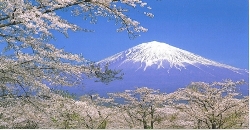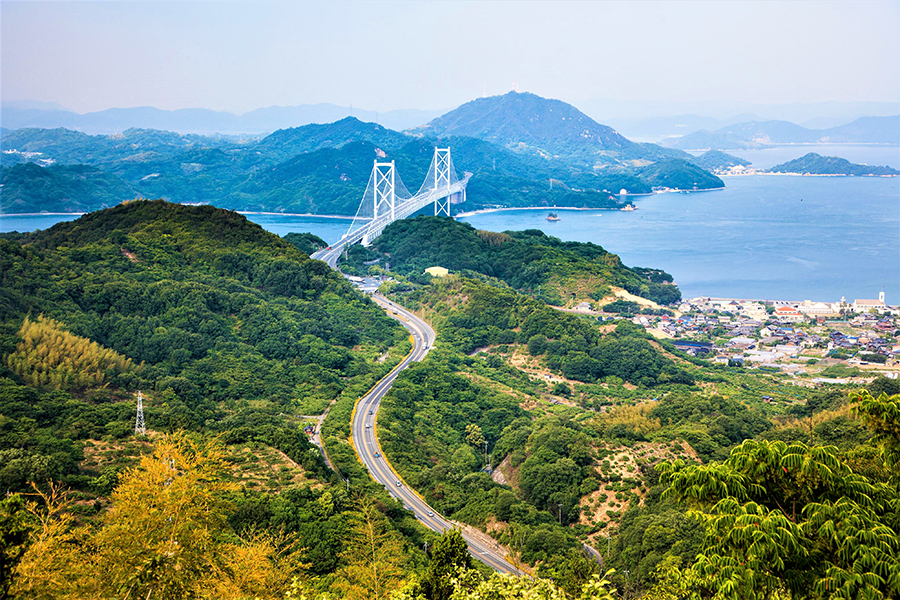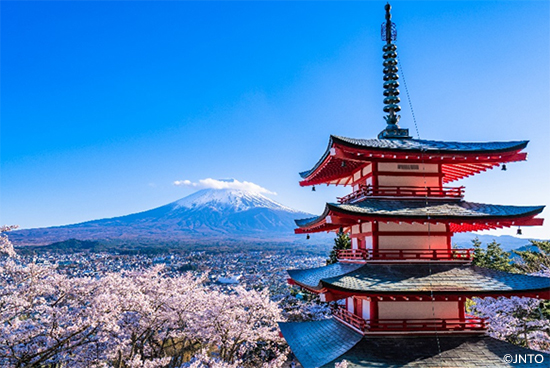The Seto Inland Sea (Seto-Naikai) is considered Japan's most scenic waterway, a vast emerald sea dotted with some 3,000 islands and islets. Much of it lies protected within the Inland Sea National Park, which stretches from western Honshu to Shikoku. And yet, exactly what does one do with a park that consists mostly of water?
Sure, you can take a cruise among the islands, hounded by a loud speaker that tells you more than you'd ever wish to know about obscure geographical and geological facts and figures, with views of islands skirted by white surf and small fishing villages gliding by, tantalizingly out of reach.
But the best way to explore the Inland Sea National Park is?surprisingly enough?by bike. In fact, you can cycle all the way from Honshu to Shikoku, thanks to the Shimanami-Kaido, a series of ten bridges that connect six islands on its journey from Hiroshima to Ehime prefectures. Opened in 1999, it offers a dedicated, 50-mile biking trail that runs alongside the highway over bridges but then diverges into the countryside on the islands. Best of all, rental bikes are available at both ends of the route for about 500 yen a day, plus a 1,000 yen deposit. If you wish, you can cycle the entire distance in less than seven hours. Or, for a more leisurely outing, you can cycle for a few hours before heading back.
I've cycled the entire length of the Shimanami-Kaido, but I have to admit I didn't do it all at once. First I cycled an hour or so from the Shikoku side. The next time I cycled a couple hours from the Hiroshima side. Then, on a trip with my teenage son, we covered the vast middle section in between. In any case, cycling the Shimanami-Kaido (also called the Setouchi Shimanami Seaway) is a glorious trip, with vistas of the sea from vantage points atop bridges, followed by jaunts through villages, woods, and scenic landscapes. There are many temples, sightseeing spots, restaurants, beaches, and other attractions along the way.
A highlight is certainly Oyamazumi Shrine on Omishima, worshipped in bygone days by samurai. It houses the Shiyoden Treasure Museum, a somewhat neglected-looking building that nonetheless is home to 80% of Japan's samurai gear designated National Treasures or National Important Cultural Assets. Donated through the centuries by warriors wishing to express gratitude for victorious battle, it's an astonishing collection of swords, helmets, and armor, seemingly in the middle of nowhere. My son was duly impressed. And then there's Kosanji Temple in the port town of Setoda on Ikuchijima Island. It dates only from 1936, when a local businessman erected it to honor his mother and then spent the next three decades constructing full-scale replicas of famous Japanese temples and shrines. If you've ever wondered what the Hall of Dreams at Horyuji Temple in Nara looks like or missed the chance to snap a shot of the Yomeimon Gate in Nikko, you'll have your chance here.
Certainly, island-hopping has never been easier. But for those of you with lazy legs, power-assisted bikes are also available. Although my son wouldn't be caught dead riding one, I have to admit it allowed me to keep up with my son and fully enjoy the ever-changing scenery along the way.



















































